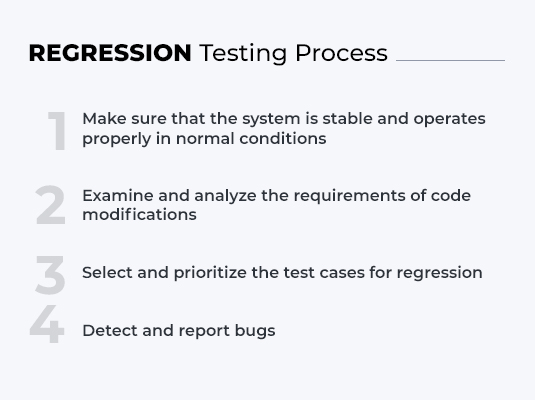Is your website designed for everyone? Perform an accessibility scan.
Regression Testing
Through regression testing, QATestLab verifies whether a system operates according to the specified requirements. This testing type is mainly carried out when there have been code changes, new features have been implemented or detected bugs were fixed. By retesting the same cases, regression testing makes sure that no unwanted side-effects appear in existing functionality, and new code does not affect old code.
To determine the frequency of the regression testing process, e.g., after bug fixing or build updating, we take into account the software specifications, deadlines, and available testing means. As a rule, a successful run of regression test cases prompts the enlargement of the test suite. We stay within the schedule and project budget by applying robust test design techniques and prioritization.
How We Test
By performing regression testing, we can retest entire test suites. However, this technique requires time and resources. To avoid extra expenses, we conduct regression test selection and execute particular tests that may potentially detect issues. We assign regression testing steps with corresponding priority to reduce the size of the test suite based on business goals and functionality.
To make the regression testing procedure as efficient as possible, we select test cases for re-execution based on particular parameters.
What Cases We Retest
- rechecking cases of functionality that has been changed
- tests with high bug frequency
- cases checking core functionality
- integration tests
- failed test cases
- complex tests

Last-minute fixing effect

